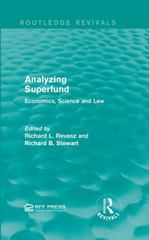3) Botswana. In his book Globalization and its Discontents, pg. 38, Joseph Stiglitz criticized the International Monetary Fund's policy toward Botswana in 1981. He uses this as one example of a larger critique of the "Washington Consensus" policy toward developing nations. This problem uses approximately accurate data to analyze the situation. First, let's normalize Botswana's working population to 100, and let labor supply be Ls = 100. Let Botswana have an aggregate production function Q = 117.54 / and assume the firms represented by this function are owned by the workers (i.e. profits accrue to households). Set the price of Q equal to $1, and note that with the given production function, the value of final output (GDP) at full employment p.O(Ls) is $1,175. Private Botswanans were saving 5% of GDP (assume perfectly inelastic with respect to the real interest rate for simplicity). The government was spending 33% of GDP and collecting taxes of 34% of GDP. Assume there are no government transfers of money between households in this economy. a) Find the equilibrium real wage in Botswana's labor market and graph the labor market. b) Find GDP as national income GDP = WL + II. Assume there are no fixed costs in the economy as whole. (Hint: we already know what GDP should be based on the setup above; check your work!) c) Find consumer spending (C) in Botswana in 1980. (Hint: recall that national income can also be measured as GDP = C + Sp + T.) d) Now let's examine the loanable funds market in 1980. Let firms' investment demand function be la = 728 - 3520r. Find and graph the equilibrium in the domestic loanable funds market. e) Actually, Botswana's real interest rate in 1980 was 10%, which is lower than in part (b). This was because Botswana could borrow in the world loanable funds market. Redraw your loanable funds market graph to show this lower real interest rate. How much total investment took place in Botswana? What were net capital inflows? f) Now find GDP using total spending rather than total income, or GDP = C + 1 + G + X - M. (Hint: you have already found each of these components in the previous steps). g) Are national income (part a), total spending (this part), and the value of final goods and services (question set up) equal? h) Botswana faced two negative shocks in 1981 due to drought and problems in the diamond industry. We'll model this by saying that the production function changed for the worse to Q' = F(L) = 103.841/2. Find and graph the new labor market equilibrium. Then, calculate the new real GDP (the easiest method is the value of total output or p'O(Le). i) The government of Botswana continued to collect taxes of 34% of Q'. The International Monetary Fund (IMF) advised Botswana to cut government spending, but instead it spent 36% of Q'. Private saving was 5% of Q', and investment was the same as above. Graph what happened in the loanable funds market assuming the world real interest rate remained at 10%







